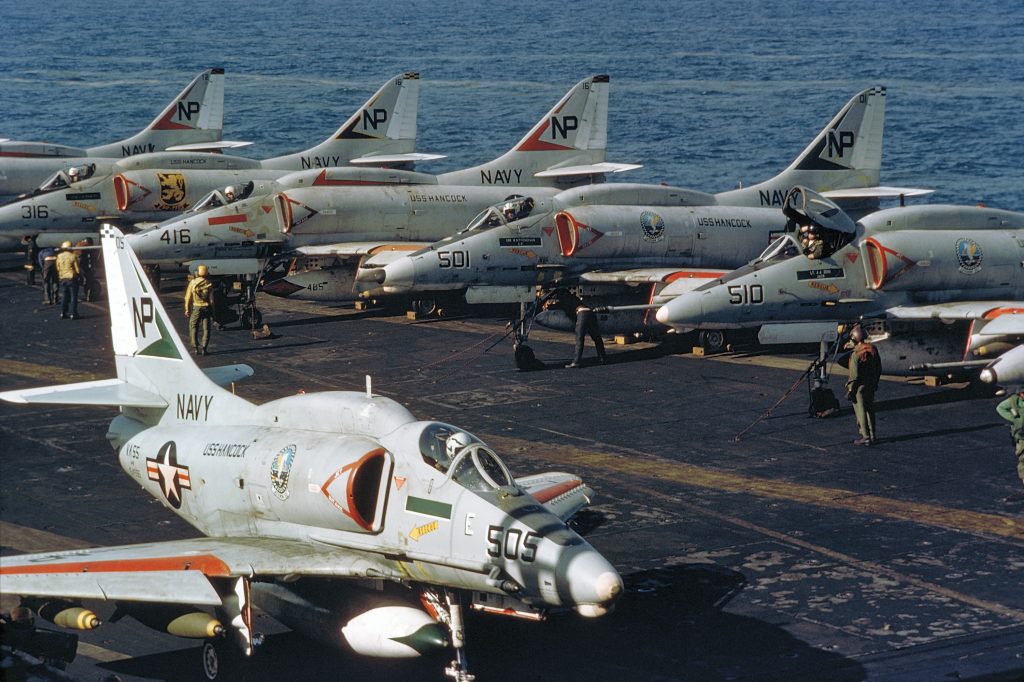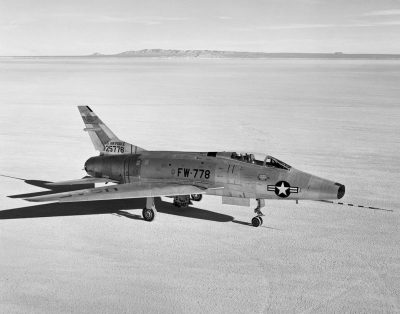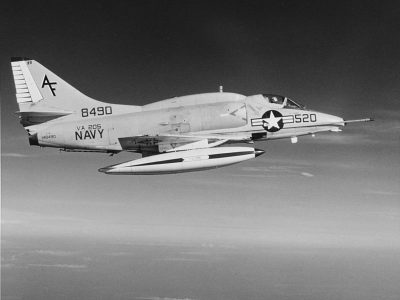
Sixty three year ago today a Navy A-4 set a speed record. Navy Lieutenant Gordon Gray Jr. flew the naval bird at an average speed of 695 mph. Here’s how it happened.


It was a period of aircraft production that was flabbergasting for its prodigious accomplishments. The Air Force was working on the Century series (F-100 (above left), F-101 (above right), etc.) while the Navy was designing a new attack jet that could operate from aircraft carriers.
The Douglas Company (later merging with McDonnell) was working on the new lightweight jet. It was designated the YA4D-1. The “Y” designates an experimental pre-production aircraft. It was to be a light attack bomber.

On October 15, 1955, Navy Lieutenant Gordon (Gordo) Gray climbed aboard the aircraft. It was powered by a single Curtiss-Wright turbojet engine. The goal was to fly a 500 kilometer course as quickly as possible.
Gordo flew the jet around the closed course averaging over 1,100 kilometers per hour. The jet nimbly navigated the 310 mile course with voracious velocity. The average speed of 695.128 miles per hour was good for a new world record. For some great photos see: https://www.thisdayinaviation.com/

The plane went on to enter production as the A-4 Skyhawk. Production began in 1956 and continued for the next 23 years It proved to be a long lasting bird. The final plane was retired from the US Navy in 2003.
Newfound Fame
The A-4 recently gained fame with the earthly passing of Senator John McCain . McCain piloted the jet during the Vietnam War. A wonderful firsthand account of that flight and McCain’s naval aviation career can be found at McCain Skyhawk
But it all began 63 years ago with Gordo Gray and the A-4 that set the speed record.

Hate to break it to you, but the A-4 has only ever had ONE engine…
Thank you Mr. Smith. We strive for accuracy at Doctor Aviation and you are absolutely correct. The aircraft had twin INTAKES for a single engine. We have corrected the post and thank you for notifying us of the error. Thank you for reading our blogs at Doctor Aviation.